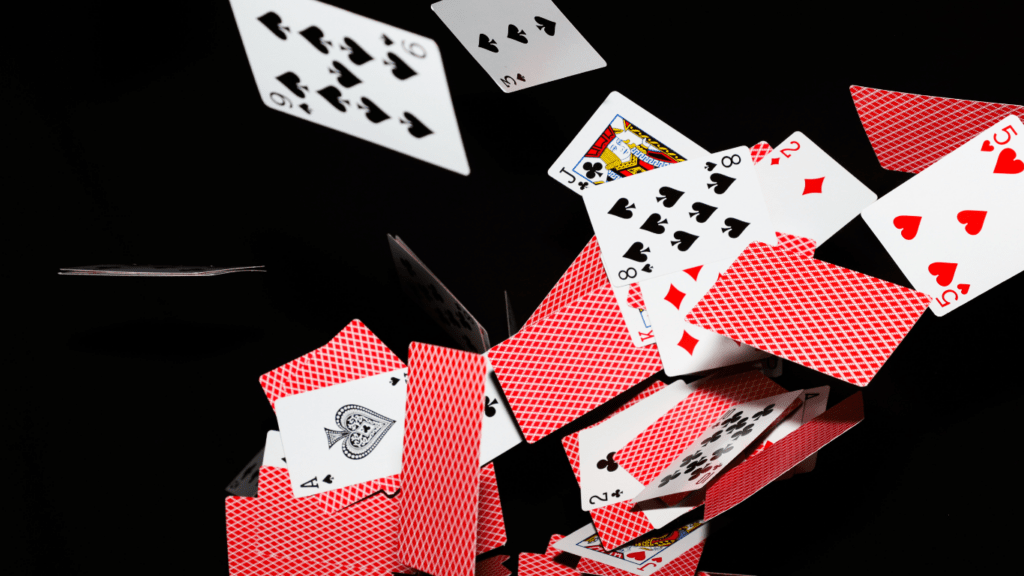Have you ever watched a magician or a professional card handler perform and wondered how they make it all look so effortless? The art of deck stacking is a closely guarded secret that transforms an ordinary game into a captivating spectacle. With the right techniques, anyone can learn to manipulate cards with precision and flair.
Overview of Deck Stacking Techniques
Deck stacking involves manipulating the order of cards to create specific outcomes during games or performances. Mastering these techniques adds an element of skill and surprise.
Definition and Purpose
Deck stacking refers to the method of arranging cards in a predetermined order to influence the outcome of card games or enhance performances. The primary purpose is to control gameplay and maintain an advantage over opponents.
Techniques include false shuffles, controlled deals, and specific stacking sequences, allowing handlers to create entertaining effects or strategic wins.
Historical Context
Deck stacking dates back centuries, with roots in various cultures. Historical references include early card games in Europe during the 14th century. The practice gained recognition in the 19th century alongside the rise of gambling and stage magic.
Notable figures, like Dai Vernon, popularized advanced techniques that showcased both skill and artistry, influencing generations of magicians and card handlers.
Essential Skills for Deck Stacking
Mastering deck stacking requires specific skills that enhance card handling and performance. Practicing these skills consistently leads to greater precision and control during card manipulations.
Card Handling Techniques
Developing card handling techniques forms the foundation of successful deck stacking. Techniques include:
- Grip: Establish a firm yet relaxed grip on the cards to maintain control without dropping or mishandling them.
- Shuffling: Learn false shuffles that maintain the card order while creating the illusion of randomness.
- Cutting: Practice controlled cuts that allow you to maintain certain known cards at key positions in the deck.
- Dealing: Execute controlled deals to ensure the right cards land in the desired player’s hands during a game.
- Palming: Perfect palming to secretly hold one or more cards in your hand without detection.
Focusing on these techniques enhances overall card handling abilities, crucial for effective deck stacking.
Practice Routines
Establishing practice routines helps reinforce card handling skills. Utilizing the following practices improves efficiency:
- Daily Drills: Incorporate specific drills that target individual techniques like shuffling, cutting, and dealing for at least 30 minutes each day.
- Slow Motion: Practice movements slowly to develop muscle memory and accuracy before increasing speed.
- Video Analysis: Record your practice sessions to analyze and identify areas for improvement.
- Mirror Practice: Use a mirror to observe hand positioning and movements, ensuring they appear natural and fluid.
- Peer Feedback: Practice with other card handlers and solicit feedback to refine your techniques and boost confidence.
These routines cultivate necessary skills for effective deck stacking, transforming practice into mastery.
Popular Deck Stacking Techniques
Numerous deck stacking techniques exist, each offering unique advantages for card handlers. Here are two widely used methods that emphasize precision and control.
The Riffle Shuffle Method
The Riffle Shuffle Method involves splitting the deck into two halves and interleaving them. This technique creates a random appearance while maintaining the desired order of specific cards. I often employ this method with a careful grip to ensure the right cards remain in position.
Mastering the Riffle Shuffle requires practice; aiming for an even interlace maximizes effectiveness. To enhance effectiveness, I suggest using the following steps:
- Prepare the Deck: Organize the cards in the desired sequence before beginning.
- Split the Deck: Divide the deck into two equal halves.
- Grip the Halves: Hold each half firmly with your thumb on one side and fingers on the other.
- Riffle the Cards: Release the cards simultaneously, allowing them to interleave.
- Square the Deck: Align the deck to ensure uniformity.
The Overhand Shuffle Approach
The Overhand Shuffle Approach offers an alternative means of maintaining card order while performing shuffles. In this method, I hold the deck in one hand and pull small groups of cards from the top into my other hand, ensuring select cards stay in their desired positions.
This technique appears natural, enhancing the illusion of randomness. Key steps for this method include:
- Grip the Deck: Hold it vertically in one hand, maintaining control over the top pack.
- Lift Small Groups: Use fingers to pull small packets from the top section.
- Place into the Other Hand: Transfer these packets one at a time, maintaining the order.
- Repeat as Necessary: Adjust how many cards you lift each time for variation.
Utilizing these techniques not only elevates performance but also cultivates a deeper understanding of card handling artistry. Integrating these approaches into my routine can significantly enhance the overall effectiveness of deck stacking.
Psychological Aspects of Deck Stacking
Understanding the psychological factors behind deck stacking enhances a card handler’s ability to perform effectively. Misdirection and confidence play significant roles in captivating an audience and ensuring successful execution.
Misdirection Techniques
I utilize misdirection to shift the audience’s focus away from crucial actions during a performance. Key techniques include:
- Eyes on the Handler: Keeping attention on my movements rather than the cards creates an illusion of randomness.
- Verbal Cues: I incorporate storytelling or humor, drawing attention to my words while executing a stacking technique.
- Gestural Patterns: Subtle hand movements can guide the audience’s gaze, redirecting their attention when necessary.
By mastering these misdirection techniques, I enhance my ability to manipulate outcomes without detection, creating a seamless performance.
Building Confidence and Performance
Confidence is pivotal in successful deck stacking and overall performance. I focus on the following aspects to bolster my self-assurance:
- Practice Routines: Regular practice leads to familiarity and comfort with techniques, boosting my confidence when performing.
- Audience Engagement: Interacting with the audience builds rapport, making me feel more at ease and secure in my performance.
- Positive Visualization: I visualize successful performances, preparing mentally for the tasks ahead.
Building confidence transforms my deck stacking skills into compelling routines that engage and astonish my audience.
Tools and Resources for Learning
I find numerous resources invaluable for mastering deck stacking. These tools enhance skill development and provide insights into advanced techniques.
Recommended Books and Tutorials
- “The Expert at the Card Table” by S.W. Erdnase: This classic text covers fundamental techniques and advanced principles in card manipulation.
- “Card College” series by Roberto Giobbi: A comprehensive multi-volume guide that details card techniques step-by-step, perfect for beginners and experienced handlers alike.
- “Magic and Showmanship” by Darwin Ortiz: This book emphasizes performance, adding a psychological aspect to card handling, essential for captivating an audience.
- Online Tutorials on YouTube: Many skilled card handlers share free tutorials, breaking down techniques visually. Channels like “The Cardistry Guy” and “Chris Ramsay” offer valuable tips.
- Virtual Workshops and Courses: Platforms like Skillshare and Udemy provide various courses on card manipulation and deck stacking techniques, allowing for interactive learning experiences.
Online Communities and Forums
- Reddit’s r/Magic and r/Cardistry: These subreddits are hubs for discussions, resources, and personal experiences in card manipulation, enabling collaboration and feedback.
- The Magic Cafe: A dedicated forum for magicians to share ideas, ask questions, and discuss techniques specific to deck stacking and card magic.
- Discord Servers: Several servers focus on card magic and manipulation, providing a real-time platform for tips and peer support.
- Facebook Groups: Groups like “Cardistry and Magic” connect card handlers, enabling members to share insights, ask for help, and showcase their progress.
- Instagram and TikTok: Following talented card handlers and magicians offers quick tips, unique methods, and a view into the latest trends in the card manipulation community.
By utilizing these resources, anyone can enhance their understanding and skills in deck stacking, paving the way for impressive card performances.


 Danae Lallyola, the visionary founder of Mode Shuffle Gamble, has established herself as a leading voice in the gambling industry by combining deep expertise in casino gaming with a strong commitment to responsible gambling. With a keen eye for industry trends, Danae built Mode Shuffle Gamble into a trusted platform that offers up-to-date gambling news, in-depth online casino reviews, and expert insights on shuffle and deck mastery, all while promoting safe and mindful gaming practices.
Danae Lallyola, the visionary founder of Mode Shuffle Gamble, has established herself as a leading voice in the gambling industry by combining deep expertise in casino gaming with a strong commitment to responsible gambling. With a keen eye for industry trends, Danae built Mode Shuffle Gamble into a trusted platform that offers up-to-date gambling news, in-depth online casino reviews, and expert insights on shuffle and deck mastery, all while promoting safe and mindful gaming practices.